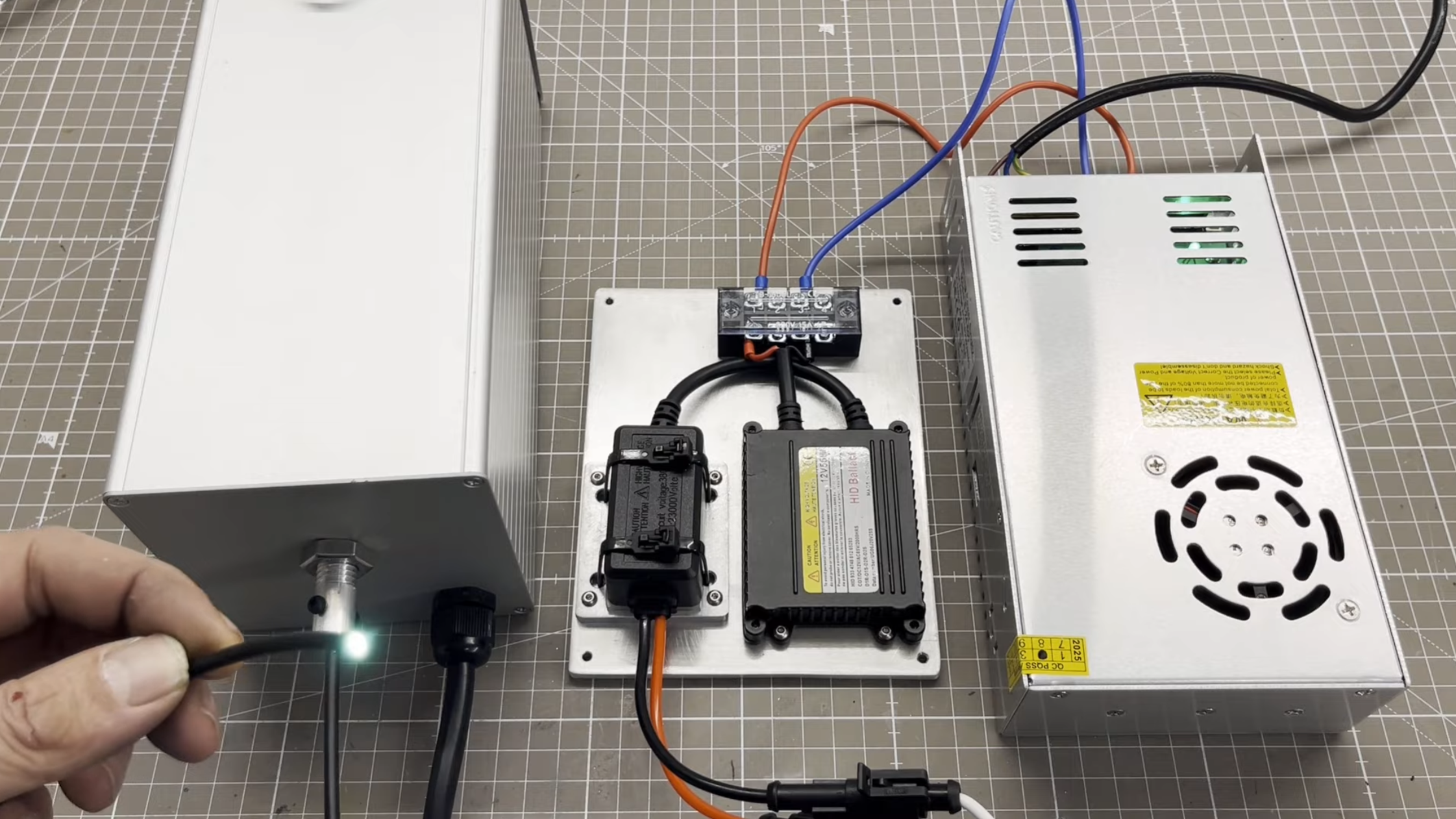Before a spectrometer can do any useful work, it needs to be calibrated to correctly identify wavelengths. This calibration is typically done by detecting several characteristic peaks or dips in a well-known light source, which then serve as references to accurately identify other wavelengths.
For hobbyists, the most common reference is the pair of peaks produced by a mercury-vapor fluorescent light. However, a more versatile option is a xenon-bulb light source, such as the one created by Markus Bindhammer in his latest video.
A xenon gas discharge produces a wide band of wavelengths, making it an excellent illumination source for absorbance spectroscopy. Even better, xenon also emits several characteristic spikes in the infrared region, broadening its usefulness for different types of spectroscopic analysis.
For his light source, Markus used an H7 xenon bulb originally designed for vehicle headlights. The bulb is positioned at the center of the source, with a concave mirror placed behind it to reflect light forward. In front of the bulb, a pair of converging lenses focus the light onto the end of an optical cable made from PMMA, which enhances the transmission of ultraviolet (UV) light.
To hold all the components securely in place, Markus used a few aluminum brackets. The concave mirror itself is ingeniously crafted from a cut-open section of aluminum pipe. The entire assembly is housed inside an aluminum case, which includes a fan mounted on one end to provide cooling.
To prevent stray light from escaping through the fan’s outlet, a light trap covers the opening, ensuring that the setup remains efficient and well-contained.
This thoughtfully designed xenon light source offers a flexible and effective solution for spectrometer calibration, especially for those looking to explore a wider range of wavelengths beyond what traditional mercury lamps offer.
https://hackaday.com/2025/11/02/building-a-xenon-lamp-for-spectroscopy/
